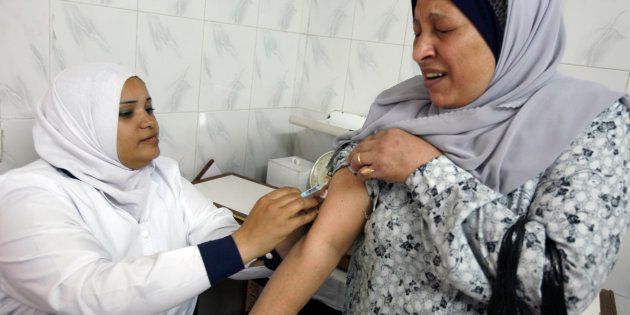
Generally, people think of vaccinating children against disease as simply a means of protecting them from illness. But I believe that fixing immunisation programmes in third-world developing countries is about so much more than that – it's got the potential to ensure healthier populations, which in turn improves economic performance. Immunisation programmes are a critical step towards economic development.
In a study that was published in Health Affairs in 2016, entitled "Return On Investment From Childhood Immunization In Low- And Middle-Income Countries, 2011–20", the researchers (Ozawa, S; Clark, S; Portnoy, A; Grewal, S; Brenzel, L; and Walker, D.G.) assessed the return on investment associated with achieving projected coverage levels for vaccinations to prevent diseases (related to 10 antigens) in 94 low- and middle-income countries during 2011 to 2020 (known as the Decade of Vaccines).
The long-term benefits of immunisation programmes in low-income countries should be measured in economic terms, not just lives saved, making the case that healthier workers are more productive due to improved energy levels and attendance records.
They found that based on the costs of illnesses averted, projected immunisations will yield a net return of roughly 16 times the costs over the decade. Using a full-income approach, which quantifies the value people place on living longer and healthier lives, they found that net returns amounted to 44 times the costs.
This research confirms what global health organisations have been saying for over a decade. Another noteworthy study was a 2005 report by the Harvard School of Public Health, commissioned by the Global Alliance for Vaccines and Immunization (GAVI), entitled 'Value of Vaccination'. The study concluded that long-term benefits of immunisation programmes in low-income countries should be measured in economic terms, not just lives saved, making the case that healthier workers are more productive due to improved energy levels and attendance records.
Two of the co-authors of the study, Harvard economists David Bloom and David Canning noted that, "When kids grow up healthier, they do better in school and, later, as adults, are more productive, earn more and save more. Overall, we found powerful new sources of economic returns from immunisation."
Canning added, "If we had calculated the value of savings, averted medical costs, welfare benefits associated with averted deaths or other effects – in addition to productivity gains – vaccination would likely blow the socks off other forms of development aid."
I believe that the economic potential of effective immunisation programmes cannot be over emphasised. To put it bluntly, vaccinating children is a bargain deal. Vaccines are generally a fairly low cost health intervention, both in terms of their manufacture and delivery, and they tend to offer long-term protection. But for the price of delivering an effective vaccine, you also get direct medical savings, which benefits the economy, plus indirect benefits like better educational performance and workplace productivity. These in term result in higher incomes earned, and then in greater savings and investments.
This potential impact is what drives me and my company, Beyond Wireless, which partners with global NGOs and health organisations, including the World Health Organisation, UNICEF and the International Committee of the Red Cross, to repair pharmaceutical and vaccine cold chains in third-world countries.
We focus on cold chain technology that protects vaccines, which need to be kept between 2 and 8°C at all times to be effective. We've developed our ColdCloud™ cold chain monitoring technology specifically to cater for challenging scenarios that might break the vaccine cold chain. For example, where vaccines are being delivered into rural regions in third-world developing countries, reliable power supply is often a challenge. Power may be unstable and /or dirty. So we developed a battery-powered device called ice3 to sit in the vaccine fridges, which doesn't need to be tied to the electricity grid. It still works when the power is down - it will send out an alert when the power goes off, as well as when the temperature in the fridge fluctuates outside of the allowable temperature zone.
This solution ensures vaccines remain effective and also allows for total visibility and constant monitoring of the cold chain. ColdCloud™ offers two devices, ice3 and ice3 EXTRA, which are WHO PQS and ISO 9001:2008 certified, that log and monitor cold storage equipment temperatures, door positions and power supply status. These units are also available in OEM-supplied fridge units.
No complex equipment is required to achieve complete visibility of an entire cold chain. Any device with an internet connection is all that is needed. We believe that our technology is simple, efficient and robust enough to work in any location around the globe.
Our aim is not only to help save lives by fixing immunisation programmes through repairing vaccine cold chains, but to positively impact entire economies by doing so.
